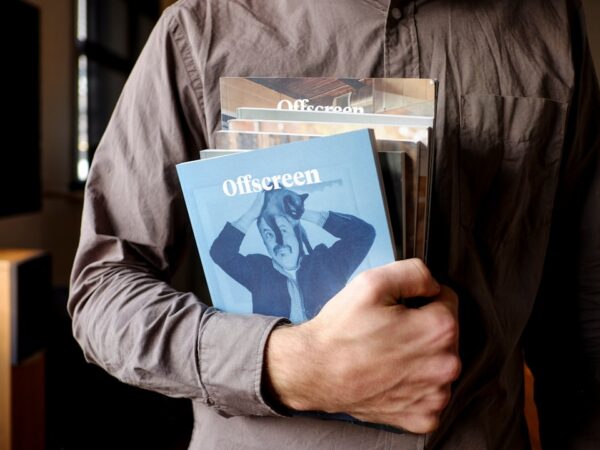
From Page to Screen: Book Adaptations of Movies
Book-to-movie adaptations have become a staple in the entertainment industry, captivating audiences with their ability to bring beloved stories to life on the big screen. From classics like “Gone with the Wind” and “To Kill a Mockingbird” to modern hits like “Harry Potter” and “The Hunger Games,” these adaptations have the power to transport viewers into the worlds they once only imagined while reading. The process of adapting a book into a movie is a complex one, requiring careful consideration of the source material, creative choices, and audience expectations. In this article, we will explore the art of adaptation, the challenges faced by filmmakers, and the impact of book-to-movie adaptations on popular culture.
Key Takeaways
- Book-to-movie adaptations have been around for over a century and continue to be a popular form of storytelling.
- Adapting books into successful films can be challenging due to differences in medium, audience expectations, and creative vision.
- Staying true to the source material can have both pros and cons, including pleasing fans but potentially limiting creative freedom.
- Screenwriters play a crucial role in adapting books for the big screen, balancing fidelity to the source material with the demands of the film medium.
- Casting can have a significant impact on the success of book-to-movie adaptations, with the right actor bringing a character to life and the wrong one potentially ruining the film.
The Art of Adaptation: Understanding Book-to-Movie Transitions
Adaptation can be defined as the process of transforming a story from one medium to another. In the case of book-to-movie adaptations, this involves taking a written narrative and translating it into a visual and auditory experience. Successful adaptations require a deep understanding of the source material and the ability to capture its essence while making necessary changes for the new medium.
Key elements of successful adaptation include staying true to the core themes and characters of the book, while also making necessary adjustments for the visual medium. This can involve condensing or expanding certain plot points, altering or combining characters, and adjusting the pacing and structure of the story. The goal is to create a film that captures the spirit of the book while also standing on its own as a cinematic experience.
The Evolution of Book-to-Movie Adaptations: A Brief History
Book-to-movie adaptations have been around almost as long as cinema itself. In the early days of film, many adaptations were faithful reproductions of popular novels, often using intertitles to convey dialogue and narration. As technology advanced, filmmakers began experimenting with more creative approaches to adaptation.
In the 1960s and 1970s, there was a surge of literary adaptations that pushed the boundaries of storytelling. Films like “One Flew Over the Cuckoo’s Nest” and “A Clockwork Orange” took risks with their visual style and narrative structure, resulting in critically acclaimed and commercially successful films.
In recent years, there has been a resurgence of book-to-movie adaptations, fueled in part by the success of franchises like “Harry Potter” and “The Hunger Games.” These adaptations have become major events in popular culture, with fans eagerly anticipating each new installment. The industry has also seen an increase in adaptations of young adult novels, as well as a growing interest in diverse stories and voices.
The Challenges of Adapting Books into Successful Films
| Challenges | Examples |
|---|---|
| Lack of Visual Representation | Harry Potter and the Sorcerer’s Stone |
| Time Constraints | The Hunger Games |
| Adhering to the Source Material | The Lord of the Rings |
| Translating Internal Monologues | The Great Gatsby |
| Managing Audience Expectations | The Da Vinci Code |
Adapting a book into a successful film is not without its challenges. Books and movies are fundamentally different mediums, each with their own strengths and limitations. Books have the advantage of being able to delve deep into a character’s thoughts and emotions, while movies excel at visual storytelling and creating immersive worlds.
One of the biggest challenges in adaptation is striking the right balance between fidelity to the source material and creative interpretation. Some fans expect a faithful adaptation that captures every detail of the book, while others appreciate a fresh take on the story. Filmmakers must navigate these expectations while also making choices that serve the medium of film.
Managing audience expectations is another challenge faced by filmmakers. Fans of a book often have preconceived notions about how characters should look and behave, which can lead to backlash if the casting or interpretation does not align with their vision. Balancing the desires of fans with the creative vision of the filmmakers can be a delicate task.
The Pros and Cons of Staying True to the Source Material
Staying true to the source material can have its benefits. It allows fans of the book to see their favorite characters and scenes come to life on the big screen, creating a sense of nostalgia and familiarity. It also ensures that the core themes and messages of the book are preserved, allowing the film to resonate with fans of the original work.
However, there are risks associated with being too faithful to the book. Some stories simply do not translate well to the visual medium, and attempting to recreate every detail can result in a disjointed or bloated film. Additionally, filmmakers may feel constrained by the expectations of fans, limiting their ability to make creative choices that enhance the story.
There have been both successful and unsuccessful examples of staying true to the source material. The “Harry Potter” series is often praised for its faithfulness to J.K. Rowling’s books, while films like “The Golden Compass” and “Eragon” were criticized for their slavish adherence to the source material at the expense of storytelling.
The Role of Screenwriters in Adapting Books for the Big Screen

Screenwriters play a crucial role in adapting books for the big screen. They are responsible for translating the written word into a visual and auditory experience, capturing the essence of the story while making necessary changes for the new medium.
The screenplay is often seen as the blueprint for a film, outlining the structure, dialogue, and visual elements. A skilled screenwriter can distill a complex novel into its essential elements, condensing or expanding as needed to create a cohesive and engaging narrative.
One of the challenges faced by screenwriters is condensing a lengthy book into a two-hour film. This often requires making difficult choices about what to include and what to leave out. It also involves finding creative ways to convey information that may be conveyed through internal monologue or descriptive prose in the book.
There have been many successful adaptations where screenwriters have played a crucial role in capturing the essence of a book while making necessary changes for the new medium. Examples include “The Lord of the Rings” trilogy, which condensed J.R.R. Tolkien’s epic fantasy into a cohesive and visually stunning trilogy, and “Gone Girl,” which skillfully adapted Gillian Flynn’s twisty thriller.
The Impact of Casting on Book-to-Movie Adaptations
Casting is a crucial element in book-to-movie adaptations, as it can make or break the audience’s connection to the characters. A well-cast actor can bring a beloved character to life, while a miscast actor can leave fans feeling disappointed and disconnected.
Casting directors face the challenge of finding actors who not only resemble the characters described in the book but also have the talent and charisma to bring them to life on screen. They must consider factors such as age, physical appearance, and acting ability, as well as the chemistry between actors in key relationships.
There have been many successful casting choices in book-to-movie adaptations. Daniel Radcliffe’s portrayal of Harry Potter in the “Harry Potter” series is often cited as a perfect example of casting, as he embodied the character’s vulnerability and bravery. Similarly, Jennifer Lawrence’s performance as Katniss Everdeen in “The Hunger Games” captured the character’s strength and determination.
Controversial casting choices can also generate buzz and discussion. When Heath Ledger was cast as the Joker in “The Dark Knight,” there was initial skepticism about whether he could live up to the iconic portrayal by Jack Nicholson. However, Ledger’s performance was widely praised and earned him a posthumous Academy Award.
The Importance of Visual Storytelling in Book-to-Movie Adaptations
Visual storytelling is a key element in book-to-movie adaptations, as it allows filmmakers to convey information and emotion through images rather than words. While books rely on descriptive prose to create a mental image for readers, movies use visual elements such as cinematography, production design, and special effects to immerse viewers in the story.
Visual elements can enhance the storytelling by creating a sense of atmosphere, conveying emotion, and highlighting important plot points. They can also help to establish the world of the story and bring it to life in a way that is visually engaging and memorable.
Successful adaptations often make use of visual storytelling to enhance the source material. The “Lord of the Rings” trilogy, for example, used breathtaking cinematography and production design to create a vivid and immersive world. The use of color in “The Great Gatsby” helped to convey the opulence and decadence of the Roaring Twenties.
The Role of Music and Sound in Enhancing Book-to-Movie Adaptations
Music and sound play a crucial role in enhancing the emotional impact of book-to-movie adaptations. They can help to create atmosphere, convey emotion, and heighten tension. From iconic theme songs to subtle background music, the right score can elevate a film from good to great.
Composers and sound designers face the challenge of finding the right balance between original music and pre-existing songs or themes from the book. They must also consider how music and sound can enhance the visual storytelling and create a cohesive and immersive experience for the audience.
There have been many successful uses of music and sound in book-to-movie adaptations. The haunting score of “Schindler’s List” added depth and emotion to the film’s powerful story, while the use of popular songs in “The Great Gatsby” helped to capture the energy and excitement of the Jazz Age.
The Influence of Fans and Critics on Book-to-Movie Adaptations
Fans and critics play a significant role in shaping public opinion about book-to-movie adaptations. Their feedback can influence box office success, critical reception, and even future adaptations of similar works.
Fans often have high expectations for adaptations, as they have a deep emotional connection to the source material. They may scrutinize every casting choice, plot change, and visual element, comparing it to their own vision of the story. Their reactions can range from excitement and enthusiasm to disappointment and anger.
Critics also play a crucial role in shaping public opinion about adaptations. Their reviews can influence whether a film is seen as a faithful and successful adaptation or a disappointing failure. Positive reviews can generate buzz and attract audiences, while negative reviews can deter viewers from seeing the film.
The Future of Book-to-Movie Adaptations: Trends and Predictions
The future of book-to-movie adaptations is an exciting and ever-evolving landscape. As technology continues to advance, filmmakers have more tools at their disposal to bring stories to life on the big screen. Virtual reality, augmented reality, and other immersive technologies may offer new ways for audiences to experience adaptations in the future.
There are also emerging trends in adaptations, such as the rise of streaming platforms and the increasing popularity of television series based on books. These formats allow for more in-depth storytelling and the opportunity to explore complex narratives over multiple episodes or seasons.
Predicting the future of adaptations is challenging, as it depends on a variety of factors such as audience tastes, industry trends, and technological advancements. However, it is likely that book-to-movie adaptations will continue to be a popular and lucrative genre in the entertainment industry.
Book-to-movie adaptations have become a beloved and enduring part of popular culture. They have the power to transport audiences into the worlds they once only imagined while reading, capturing the essence of beloved stories while making necessary changes for the visual medium. The art of adaptation requires a deep understanding of the source material, creative choices, and audience expectations.
While there are challenges associated with adapting books into successful films, there are also many opportunities for creativity and innovation. Staying true to the source material can have its benefits but also risks being too faithful. The role of screenwriters, casting, visual storytelling, music and sound, and the influence of fans and critics all play a crucial role in shaping the success of book-to-movie adaptations.
As the industry continues to evolve, there are emerging trends and predictions for the future of adaptations. With advancements in technology and changing audience preferences, the possibilities for bringing beloved stories to life on the big screen are endless. Book-to-movie adaptations will continue to captivate audiences and shape popular culture for years to come.
FAQs
What are book adaptations of movies?
Book adaptations of movies refer to the process of turning a book or novel into a film or movie. This involves adapting the story, characters, and plot of the book to fit the visual medium of film.
Why are books adapted into movies?
Books are adapted into movies for various reasons, including the popularity of the book, the potential for a successful movie franchise, and the desire to bring a beloved story to a wider audience.
What are some popular book adaptations of movies?
Some popular book adaptations of movies include “The Lord of the Rings” trilogy, “Harry Potter” series, “The Hunger Games” series, “The Fault in Our Stars,” “The Da Vinci Code,” and “Gone Girl.”
How faithful are book adaptations of movies to the original book?
The faithfulness of book adaptations of movies to the original book varies. Some adaptations stay true to the book’s plot, characters, and themes, while others take creative liberties and make significant changes to the story.
What are some challenges in adapting a book into a movie?
Some challenges in adapting a book into a movie include condensing the story to fit within a typical movie runtime, capturing the essence of the book’s characters and themes, and making changes that will appeal to a wider audience.
What are some benefits of adapting a book into a movie?
Some benefits of adapting a book into a movie include the potential for a wider audience, increased exposure for the book and author, and the ability to bring the story to life in a new and exciting way.


















